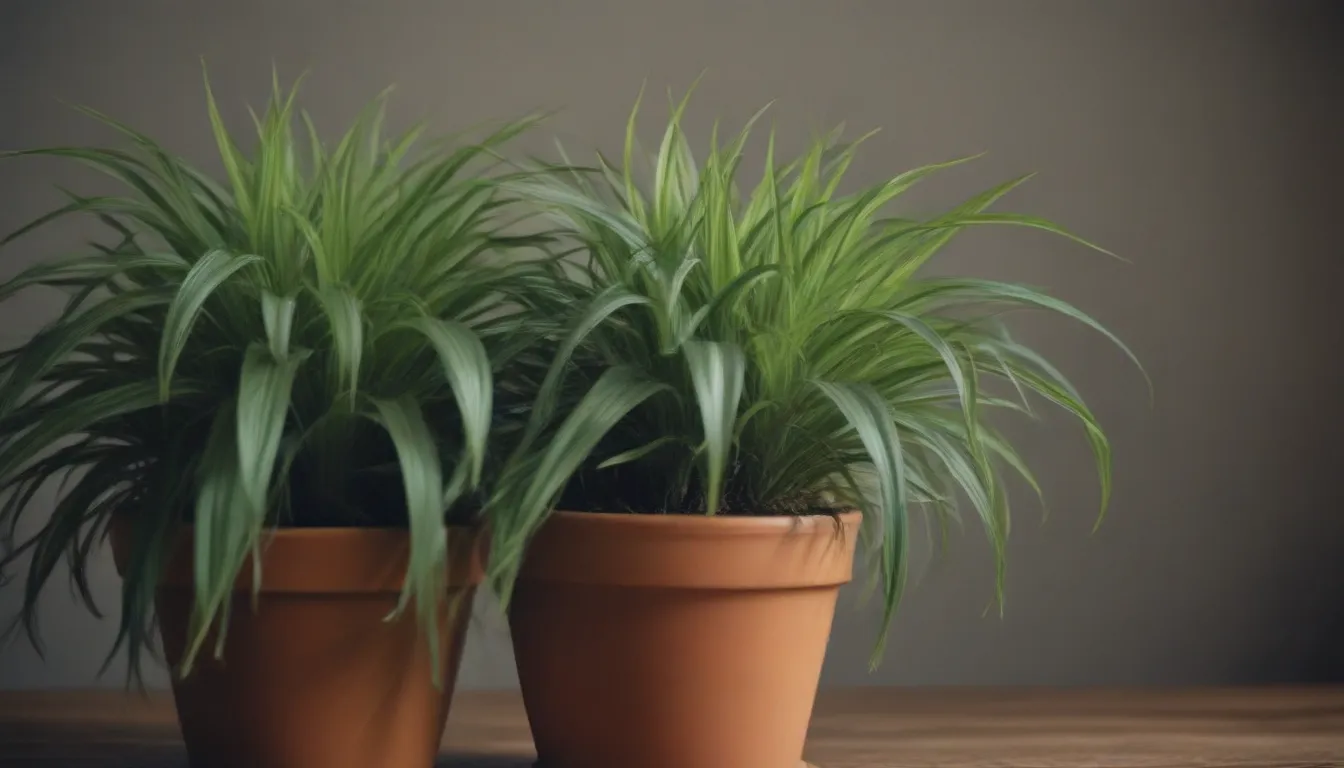The Ultimate Guide to Growing and Caring for Spider Plants

If you’re looking to add a touch of greenery to your indoor space, spider plants are a fantastic option. Despite their somewhat spooky name, spider plants (Chlorophytum comosum) are incredibly popular among houseplant enthusiasts. With their unique arching leaves and ability to produce adorable plantlets, spider plants are a great addition to any home or office.
Why Choose Spider Plants?
Before we delve into the care tips for spider plants, it’s essential to understand why these plants are so beloved. Here are a few reasons why spider plants are a popular choice for indoor gardening:
- Spider plants are fast-growing and can easily thrive in various environments.
- They produce beautiful rosettes of slender leaves that can grow up to 18 inches long.
- Spider plants are known for their ability to produce plantlets, allowing you to propagate new plants effortlessly.
- These plants can help improve indoor air quality by removing pollutants like formaldehyde from the air.
Now that you know why spider plants are a great choice, let’s discuss the essential care tips to keep your plants healthy and thriving.
Spider Plant Care Tips
Light
Spider plants prefer bright, indirect light. While they can tolerate some shade, they won’t thrive in low-light conditions. Avoid placing your spider plant in direct sunlight, as this can lead to leaf scorching. If you’re growing your plant indoors, a bright window or patio door that receives indirect sunlight is ideal.
Soil
When it comes to soil, spider plants prefer a loose, well-draining potting mix. While they can adapt to different soil types, a loamy soil with sharp drainage is best. Aim for a neutral pH soil, although spider plants can tolerate slightly acidic to slightly alkaline conditions.
Water
Spider plants like to be kept lightly moist but not waterlogged. Overwatering can lead to root rot and ultimately harm the plant. To prevent issues like browning leaf tips, avoid using water with high fluoride or chlorine content. If possible, use rainwater or distilled water for watering your spider plants.
Temperature and Humidity
Spider plants thrive in warm, humid conditions. They prefer temperatures above 50 degrees Fahrenheit and should be protected from drafts and air-conditioning vents indoors. Regular misting can help maintain adequate humidity levels for your plant to thrive.
Fertilizer
To keep your spider plant healthy and thriving, fertilize it approximately once a month during the active growing seasons of spring and summer. Use an all-purpose granular or water-soluble fertilizer, following the label instructions. Be mindful not to over-fertilize, as this can lead to brown leaf tips.
Types of Spider Plants
There are several varieties of spider plants to choose from, each with its unique characteristics:
- Chlorophytum comosum ‘Variegatum’: This variety features green and white striped leaves.
- Chlorophytum comosum ‘Vittatum’: Known for its solid green leaves.
- Chlorophytum comosum ‘Bonnie’: This variety has curly, twisted leaves, adding a unique touch to your indoor garden.
Pruning and Propagating Spider Plants
Pruning
Regularly removing dead or browning leaves from your spider plant can help keep it looking its best. If your plant is becoming leggy or sparse, consider pruning back the baby plantlets to redirect energy to the main plant.
Propagating
Spider plants are incredibly easy to propagate, making them a popular choice for sharing with friends. Here are a few tips for propagating your spider plant:
- Plant offsets or divide the roots to propagate new spider plants.
- Gently pull apart the root ball into sections, ensuring to keep as many roots intact as possible.
- Replant the sections in fresh soil and watch them grow into new plants effortlessly.
Potting and Repotting Spider Plants
Spider plants are commonly grown in containers, making them a great choice for hanging planters due to their cascading foliage. When potting or repotting your spider plant, keep the following tips in mind:
- Choose a container that is no more than one-third larger than the root ball.
- Ensure the container has proper drainage holes to prevent waterlogging.
- Repot your spider plant every two to three years, especially if you notice roots protruding from the drainage holes.
Common Pests and Problems
While spider plants are generally healthy, they can still face a few common issues like pests and diseases. Here are some tips to help you tackle common problems with spider plants:
- Combat pests like aphids, whiteflies, and spider mites with regular rinsing or natural remedies like neem oil.
- Address issues like leaf burn, browning leaves, or sparse growth by adjusting factors like light, water, and fertilization.
By following these care tips and troubleshooting common problems, you can ensure that your spider plant remains healthy and thriving for years to come. Whether you’re a seasoned plant parent or a beginner, spider plants are a fantastic choice for adding greenery to your indoor space.
Remember, spider plants are resilient and can adapt to less-than-perfect conditions. With a little bit of care and attention, your spider plant will reward you with its unique beauty and charming plantlets. So go ahead, give spider plants a try, and watch them brighten up your home with their lush foliage and air-purifying abilities.
In conclusion, spider plants are a wonderful addition to any indoor garden, offering beauty, versatility, and air-purifying benefits. With the right care and attention, you can enjoy these lovely plants for years to come. So why not bring a spider plant into your home and experience the joy of growing and caring for these delightful houseplants?





